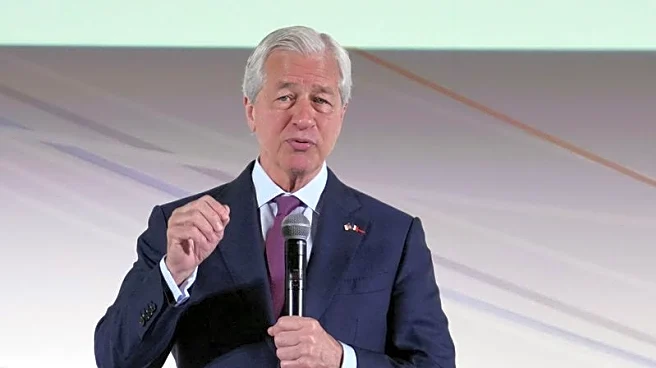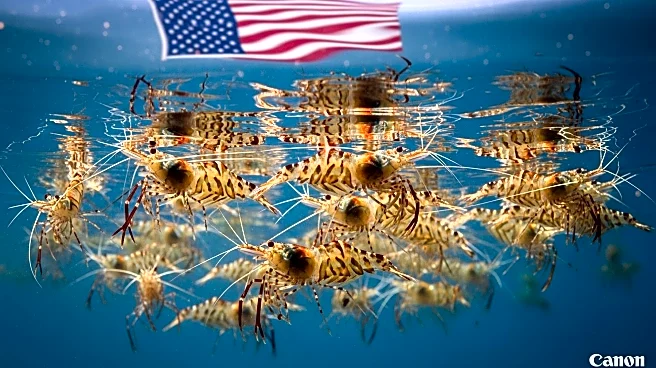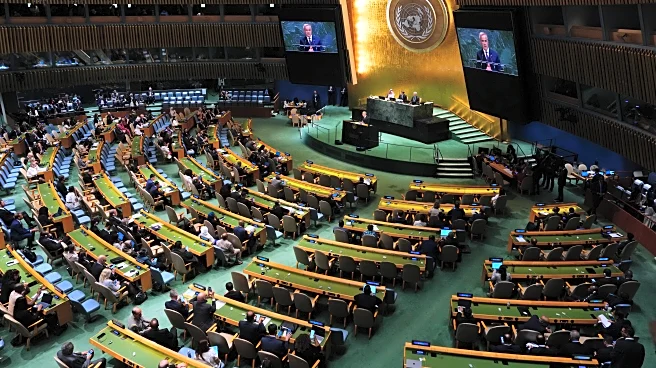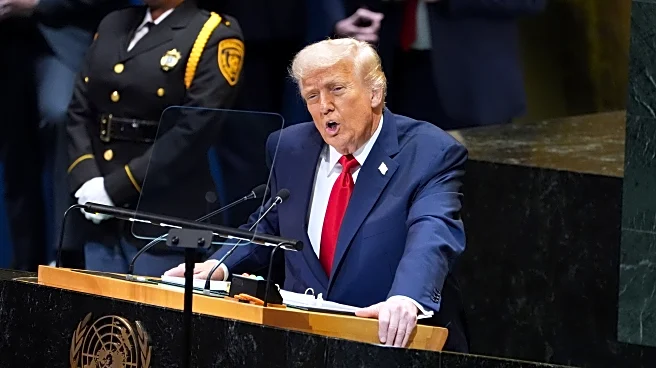What is the story about?
What's Happening?
The U.S. shrimp industry, heavily reliant on imports from India, is facing significant disruptions due to tariffs imposed by President Trump. These tariffs, initially set at 25% and later increased to 50%, were implemented as a punitive measure against India for its substantial purchases of Russian oil. The eastern state of Andhra Pradesh in India, which exports a large portion of its shrimp to the U.S., is particularly affected. The tariffs have led to a drastic drop in farm sales, with reports indicating a 90% decrease in demand from the U.S. This situation has resulted in job losses and financial strain for workers in shrimp processing plants, who are experiencing reduced shifts and income. The industry, employing over a million people, is struggling to find alternative markets to offset the loss of U.S. demand.
Why It's Important?
The tariffs imposed by President Trump have significant implications for both the U.S. and Indian economies. For the U.S., the reduction in shrimp imports from India could lead to increased prices and supply shortages, affecting consumers and businesses reliant on this seafood. For India, the tariffs threaten the livelihoods of millions employed in the shrimp industry, exacerbating economic challenges in regions dependent on shrimp exports. The situation highlights the broader impact of international trade policies on local economies and the interconnectedness of global markets. The tariffs also underscore the geopolitical tensions between the U.S. and India, potentially influencing future trade negotiations and diplomatic relations.
What's Next?
Indian shrimp exporters are seeking to diversify their markets, targeting countries like the United Kingdom, South Korea, and Japan to mitigate the impact of U.S. tariffs. However, this transition may take several months, posing challenges for industry players with thin profit margins. The Indian government is engaging with industry leaders to explore new market opportunities, while trade talks between Washington and New Delhi continue. The outcome of these discussions could influence future tariff policies and economic strategies for both nations. Meanwhile, the U.S. shrimp industry may need to explore alternative sources to meet consumer demand.
Beyond the Headlines
The tariffs have exposed vulnerabilities in the Indian shrimp industry, including labor exploitation and environmental concerns related to shrimp farming practices. Reports of underpayment, forced labor, and antibiotic use in shrimp farming raise ethical and regulatory questions. Additionally, the geopolitical dynamics between the U.S. and India could have long-term implications for trade relations and economic strategies. The situation also reflects broader challenges in balancing economic interests with ethical considerations in global trade.
AI Generated Content
Do you find this article useful?















